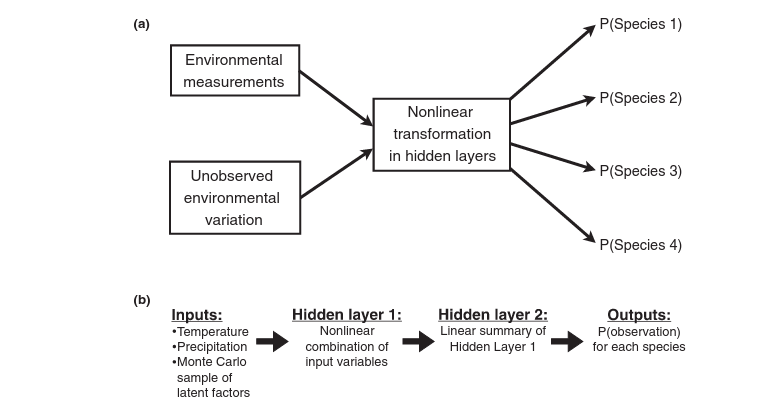Harris, D. J. (2015), Generating realistic assemblages with a joint species distribution model. Methods in Ecology and Evolution, 6: 465–473. doi: 10.1111/2041-210X.12332
The last article I reported on examined stacked species distribution models (SDMs) to predict species richness across a landscape. This paper extends the idea of using SDMs for studies at the community level, incorporating information ignored by stacked SDMs (i.e., data on species co-occurrences). One method that incorporates data on species co-occurrences is joint species distribution modeling (JSDM). Here, the author extends this approach using a stochastic neural network approach (which he refers to as mistnet). This approach is compared to two common approaches. First, a stacked SDM of trained boosted regression models for each species. Second, a deterministic neural network approach. All approaches used breeding bird survey data. These data were split into train and test sets, where test data consisted of 280 routes and the training set of 1559 routes, separated by a 150 km buffer (see Figure 2 from paper). The deterministic neural net performed comparably to mistnet in predicting species occurrence probabilities, but mistnet outperformed the deterministic neural net when predicting community composition at a given site. The traditional joint SDM did not perform well in either task. The article doesn’t go into the tuning of mistnet (e.g., number of hidden layers), but it looks really cool, and all the code is available on Github.

